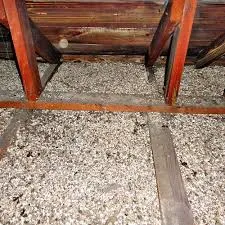Sep . 28, 2024 16:56 Back to list
High-Quality Steel Wire Rod Coils for Industrial Applications and Construction Needs
Steel Wire Rod Coils An Overview of Their Production and Applications
Steel wire rod coils are essential products in the steel industry, serving a multitude of applications across various sectors. These coils are produced from high-quality steel and are primarily used to manufacture wire, cables, and a plethora of other metal products. Understanding their production process, properties, and applications is vital for industries relying on this material.
Production Process
The production of steel wire rod coils begins with the steelmaking process. The raw materials, primarily iron ore, coal, and limestone, are melted in a furnace to produce molten steel. This molten steel is carefully refined to achieve desired chemical compositions and mechanical properties. The next step involves casting the molten steel into billets, which are semi-finished products.
The billets are then heated and passed through a series of rolling mills. During this hot rolling process, the billets are transformed into wire rods by being reduced to specific diameters, typically ranging from 5.5 mm to 12 mm. After rolling, the wire rods are rapidly cooled, usually through a process known as water quenching, to enhance their mechanical properties.
Once cooled, the wire rods are coiled into large, manageable coils, which can weigh anywhere from 1 to several tons. These coils are then packaged and prepared for shipment to various manufacturers, where they will be further processed into final products.
Properties of Wire Rod Coils
Steel wire rod coils exhibit distinct physical and mechanical properties, making them suitable for a wide range of applications. The primary properties include high tensile strength, ductility, and resistance to corrosion. These characteristics are influenced by the specific type of steel used, which can vary based on the end application.
Heat treatment and surface treatments can further enhance the properties of wire rods. For instance, some wire rods undergo processes to improve their durability and resistance to environmental factors, which is crucial for applications in harsh conditions.
Applications
steel wire rod coils

The applications of steel wire rod coils are broad and span multiple industries. Here are some key sectors that utilize these products
1. Construction Industry Wire rod coils are extensively used in the construction industry to manufacture reinforcement bars (rebar), wire mesh, and other structural components. Their high tensile strength makes them ideal for reinforcing concrete structures.
2. Manufacturing of Cables Steel wire rods serve as the primary raw material for the production of various types of cables, including electrical and telecommunications cables. The flexibility and strength of the steel ensure the reliability and performance of these cables.
3. Automotive Industry In the automotive sector, wire rods are used to produce springs, fasteners, and other critical components. The durability and fatigue resistance of steel wire rods are essential for automotive applications where safety and reliability are paramount.
4. Household Products Many everyday items, such as hangers, hooks, and fence wires, are manufactured from steel wire rods. The versatility of the material allows for the creation of various products catering to consumer needs.
5. Agriculture In the agricultural sector, wire rod coils are used to make fencing, baling wires, and other agricultural tools. Their strength ensures that farm infrastructure remains intact under various conditions.
Environmental Considerations
As industries strive for sustainability, the production and use of steel wire rod coils are also being scrutinized for their environmental impact. Manufacturers are increasingly adopting greener practices, such as recycling scrap steel and reducing emissions during the production process. Innovations in manufacturing technologies are also being explored to improve energy efficiency and minimize waste.
Conclusion
Steel wire rod coils play a critical role in modern manufacturing and construction, offering versatility and strength across various applications. Understanding their production process, properties, and uses is essential for anyone involved in industries that rely on steel. As technology advances, the future of steel wire rod coils looks promising, with potential improvements in sustainability and performance set to enhance their value in the market. With ongoing demand across diverse sectors, these coils will likely remain a foundational component of our industrialized world.
-
Fe-C Composite Pellets for BOF: Enhance Steelmaking Efficiency
NewsAug.07,2025
-
Eco-Friendly Granule Covering Agent | Dust & Caking Control
NewsAug.06,2025
-
Fe-C Composite Pellets for BOF: High-Efficiency & Cost-Saving
NewsAug.05,2025
-
Premium Tundish Covering Agents Exporters | High Purity
NewsAug.04,2025
-
Fe-C Composite Pellets for BOF | Efficient & Economical
NewsAug.03,2025
-
Top Tundish Covering Agent Exporters | Premium Quality Solutions
NewsAug.02,2025
